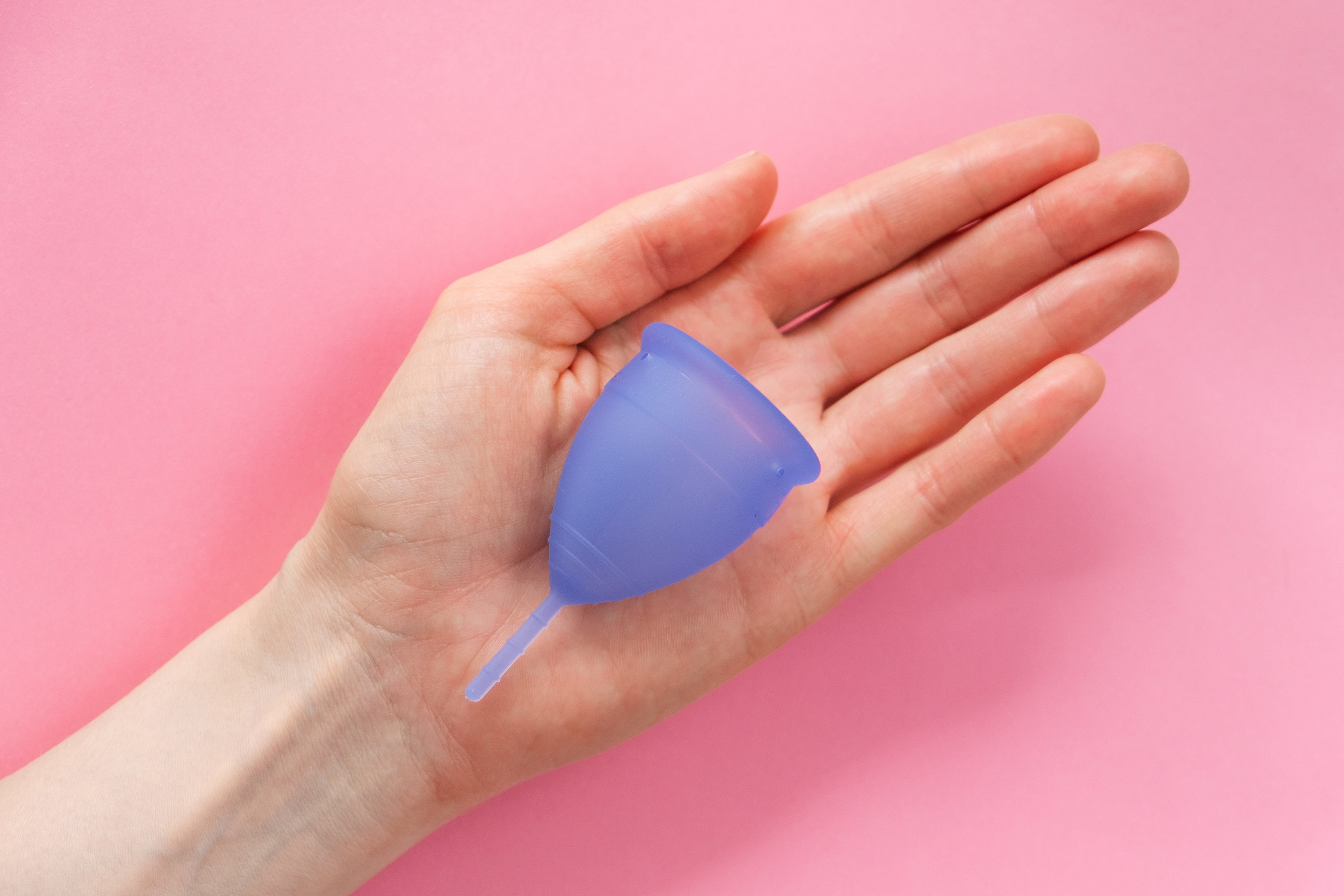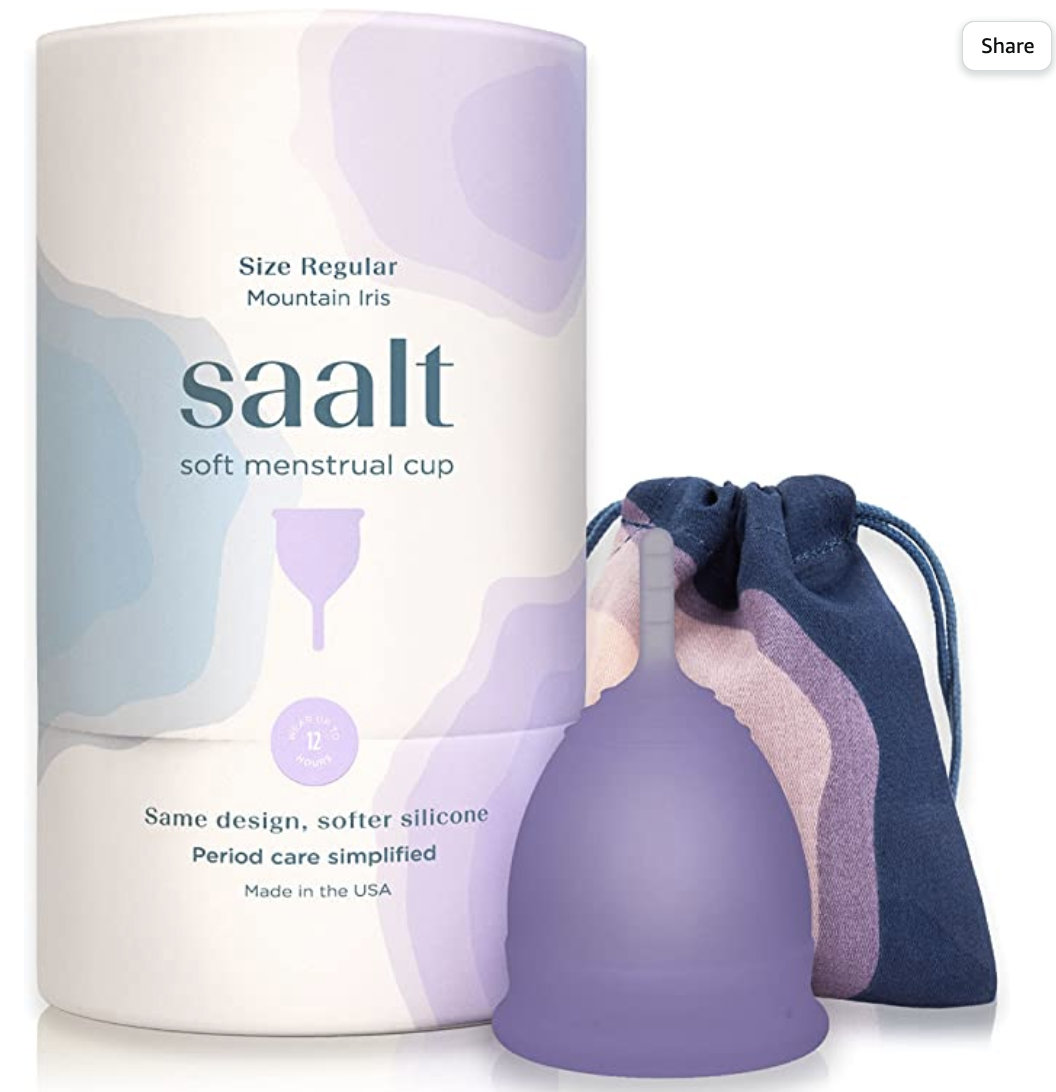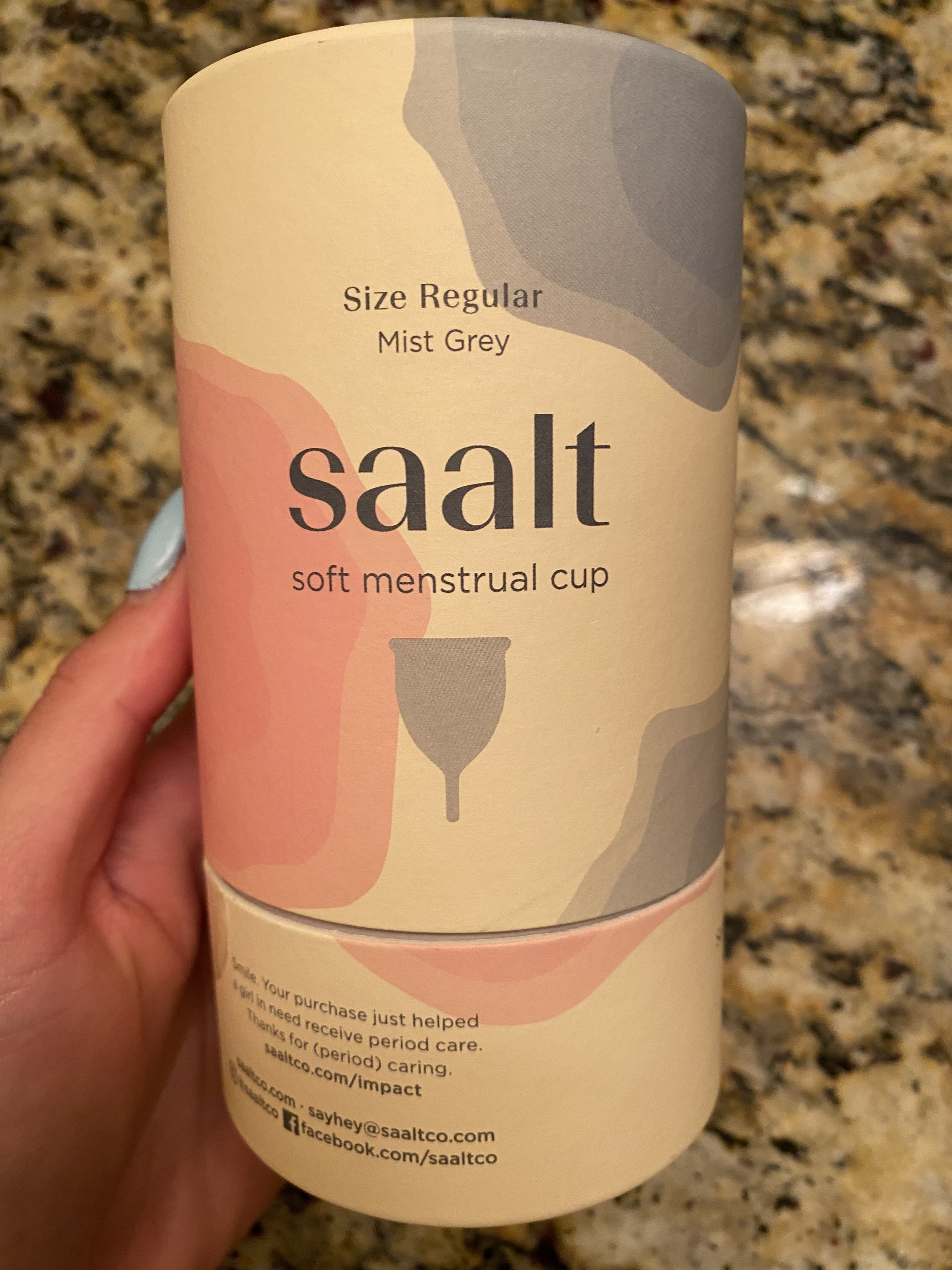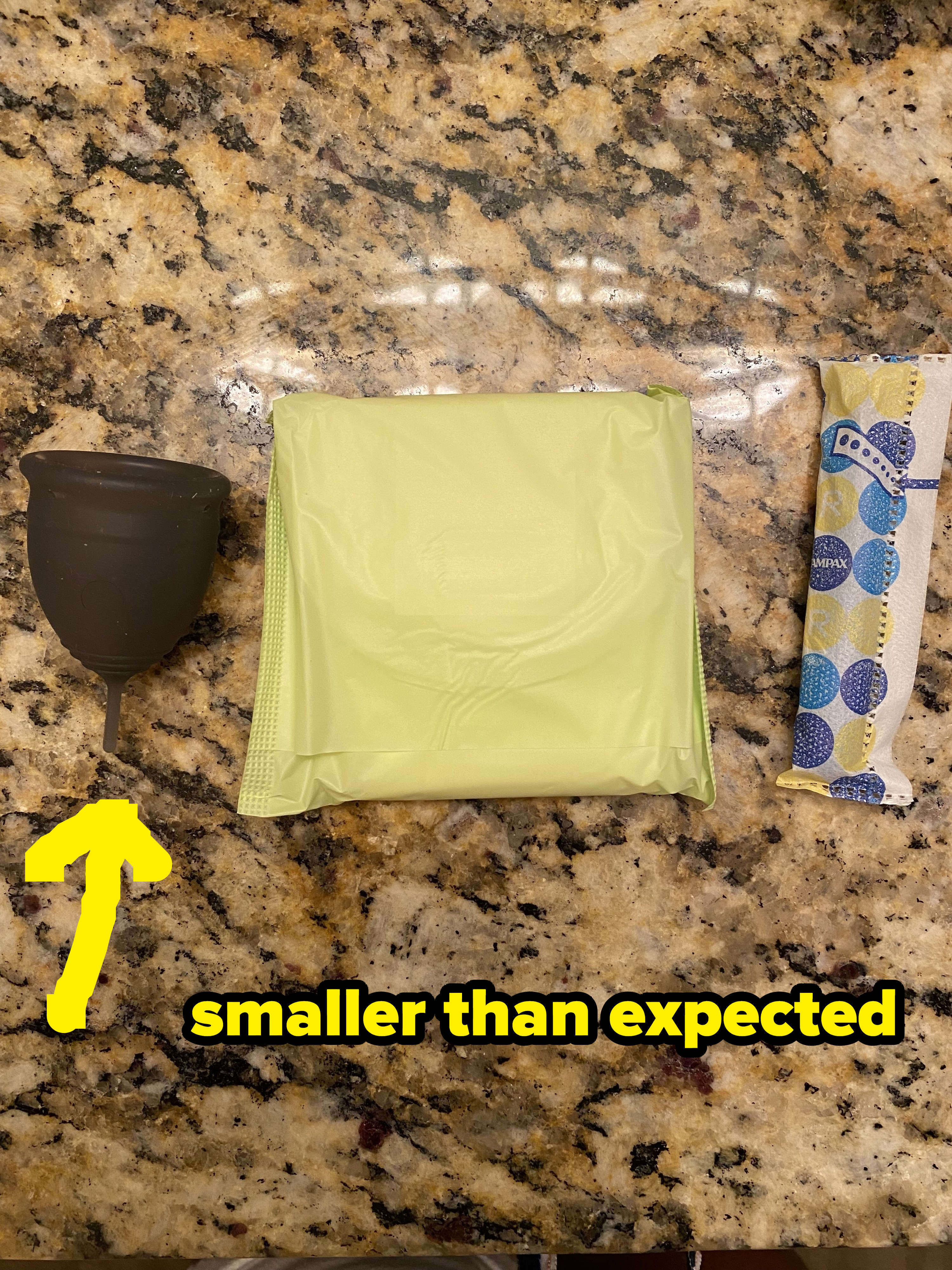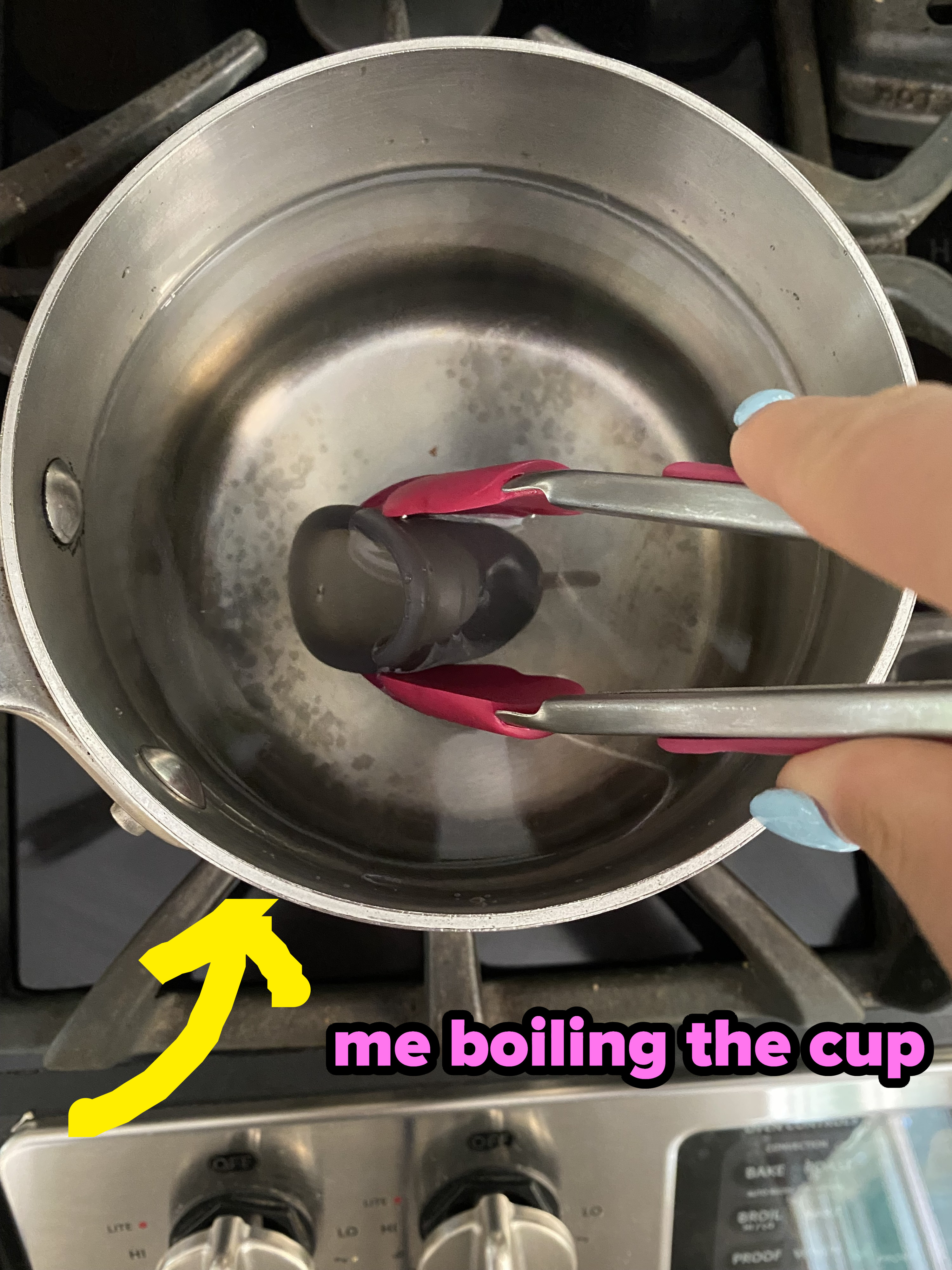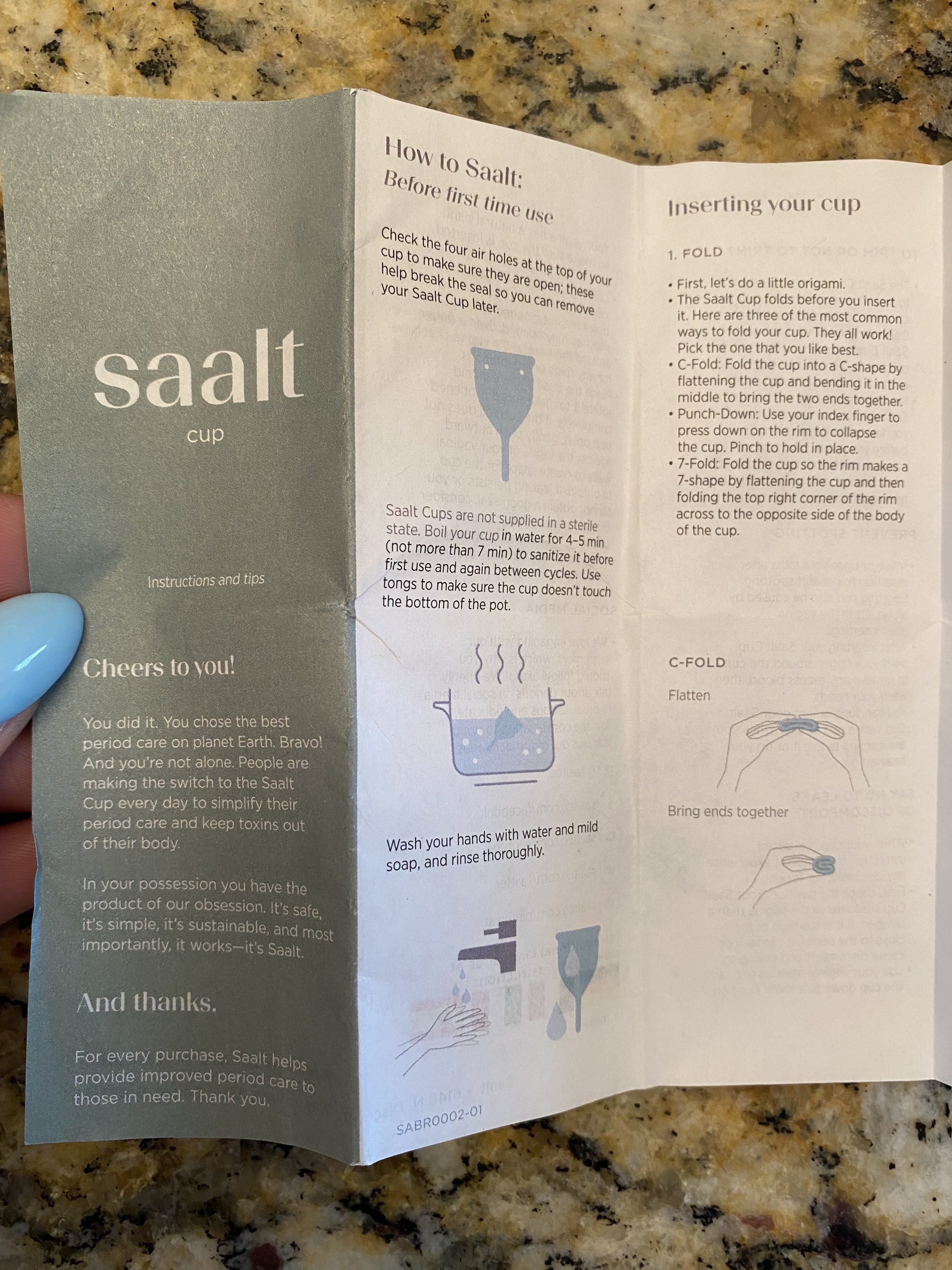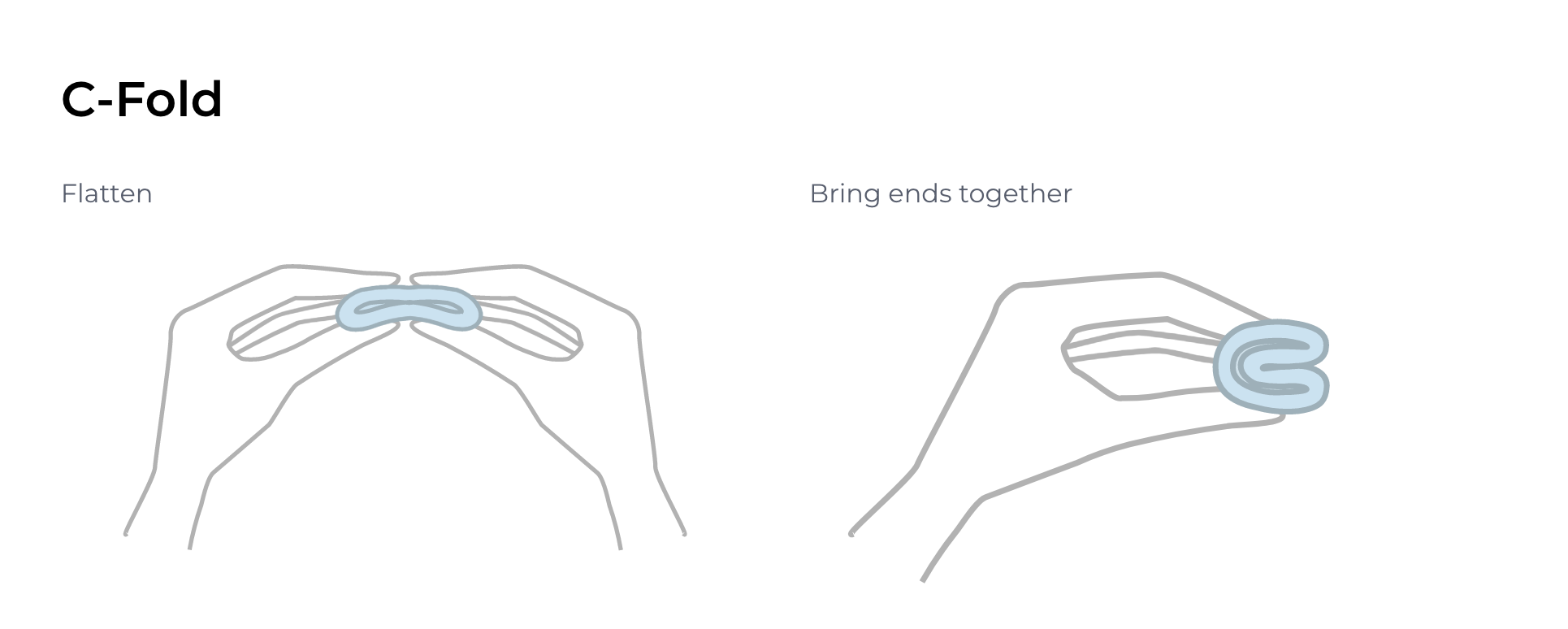Saalt also has a soft and regular version. The soft one was “designed especially for those with a history of bladder sensitivity, cramping or discomfort with firmer cups,” according to their site. Since I often get bad period cramps, I went with the soft option. And the regular one is made from a slightly firmer silicone, which “allows it to open easily when inserted.” “Leakage can occur, but according to limited research, leakage is less likely with a menstrual cup in comparison to a tampon. A menstrual cup can hold up to 1 fluid ounce, which is substantially more than a tampon,” she told BuzzFeed. I planned on using the cup the next day, so I made sure to wash the cup and set it aside for the night. Even though you can wear a menstrual cup while you’re sleeping, I planned on resorting back to good ol’ pads. (Just my preference: I don’t mind sleeping with pads and don’t like the thought of something inside me when I sleep.) After doing the math, the menstrual cup is way more cost-efficient in my case since I typically use both pads and tampons and replenish my stock of them pretty often. • How comfortable was it? I’m someone who has a heavy flow but hates wearing a super-size tampon because I can feel it inside me and it’s just uncomfortable. I was really surprised at how comfortable the menstrual cup was, and it didn’t bother me at all as I went about my day. • Did I experience any leakage? Compared to the little leakage I experience with tampons, I personally didn’t experience any leakage with the cup. • Will the cup replace my go-to pads and tampons? I’ll likely replace my daytime tampons with the cup but keep pads for sleeping. “Anyone with a phobia of foreign objects in the body should avoid using a menstrual cup,” Dr. Burroughs told BuzzFeed. And those who might be sensitive to silicone or rubber material can possibly get an allergic reaction or vaginal irritation. Overall, if you try a menstrual cup and find it to be uncomfortable or don’t like the thought of folding and inserting an object inside your body and never want to try it — that’s OK! It’s important to listen to your body and do what’s best for you.
